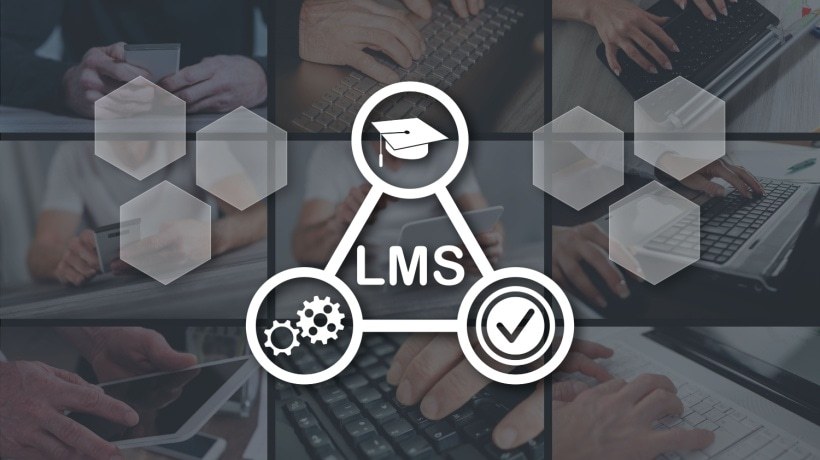Customizing Your Training With A White-Label LMS
When you’re delivering training to employees, extended network partners, or customers, you want it to represent your brand. It helps you build trust and authority with learners. But creating a custom platform can be costly. Plus, it may be outside your technical expertise. That’s where a white-label LMS can help.
A white-label learning platform allows you to make your training your own. It’s a specific type of LMS customization that lets you integrate your brand’s look and feel and remove any reference to the original vendor. That way, learners see training as your product, and their whole experience is with you and your brand alone.
With a white-label LMS, you don’t have to reinvent the wheel to make your customer or employee training courses look like your own product.
Why You Need A White-Label LMS
There are a lot of reasons to customize your training. The goal of white labeling is to give users a seamless training experience with your company. It goes beyond adopting a custom theme. You’re creating an experience that looks and feels like you developed the platform, especially for your audience. A branded LMS benefits you in several ways.
- White labeling gives you a custom platform at a fraction of the cost
You get a completely customized training experience without having to develop the technology from scratch. Instead, you adapt an already tried and tested platform to your brand. You’ll be able to launch your training program quickly and at a lower cost. You’ll also have expert resources at your command as you build and administer your content. - It builds a stronger connection with the learner
Your audience will feel more connected to your organization when they see you as the sole source of their training. They’ll also feel more comfortable engaging with the platform when it’s familiar. Customization allows you to recreate the look and feel of your other points of engagement (internal portals, website, etc.). This can remove intimidation as learners engage with online courses. - It boosts your brand
A branded LMS helps people associate your content with your company. It establishes your authority as the source of the content they value. This is especially crucial when you’re offering extended network training or paid training courses as part of your business. - It expands your training’s functionality
Instructional design can be limited by the given features of a standard LMS. Many white-label options are already built to integrate with applications you use regularly. That means you can use software your learners are familiar with to help them better engage with your content.
9 Ways To Customize Your Training Platform
With all these benefits in mind, you can see the great potential a white-label product offers. You can use the features to ensure your training looks and is unique to your organization. Here are 9 ways you can customize your training portal with a white-label LMS.
1. Start With Branding
To make your training feel yours, first, you need to make it look like yours. Take advantage of design features to include your logo. Also, match your company colors and any other design element users will be familiar with. This helps learners know they’re in the right place and can get them navigating quickly with a familiar interface.
2. Claim Your Domain
Most LMS platforms direct users to a site under their domain name, even if your company name is included in the URL. A white-label product allows you to route to a domain name that is your own. This helps users recognize you as the source of the content. It also makes it easier for them to remember the location and log in from anywhere.
3. Insert Your Voice
Your customers and employees have come to expect a certain tone from you—whether that’s professional, casual, or enterprise-specific. Help learners feel like they’re working directly with you by adding your voice to the training. You can set the tone with your content, and carry your voice through by adapting the language on navigation and instruction headings.
4. Make Your Homepage All Yours
The homepage is the first thing users see every time they log in to your training. It’s also the most frequent one they’ll see. Learners will return to the homepage every time they log on to continue learning, complete an assignment, or review content. It’s important that you create strong familiarity from the beginning by branding your homepage.
Consider adding a welcome message or company mission statement. Make a custom menu with your unique training courses and offerings. Use multiple media formats, like a kickoff video or an infographic, to engage learners and help them connect with you.
5. Target A Specific Audience Or Event
You can tie the design and message to your audience or to a specific event or campaign. Whether you’re targeting the training to a specific client vertical or to a department in your organization, you can adjust the look and voice to match. Or if the training is part of a campaign kickoff, new product launch, or compliance initiative, rebrand accordingly. You’ll let your users know you’re supporting them and the organization’s goals.
6. Customize Sub-Portals
With a good white-label LMS, you can go a step further and create tailored branches for specific audiences. For example, you can create sub-portals for individual departments in your organization. Or, for different verticals in your extended network or customer base. Then, brand each version of your training and its content to speak to these groups.
Make sure your LMS can host these sub-portals and make it easy for administrators to navigate between them easily.
7. Integrate Apps To Tailor Your Training Experience
A good white-label LMS has the capacity to integrate native or external applications. That means you can open the door for blended learning events by incorporating video conferencing. You can increase functionality by implementing web apps for things like messaging, task management, and more. If you offer paid courses, link with your favorite eCommerce apps.
Integrate applications you already use to give learners a more familiar experience and cut down on the learning curve.
8. Offer Language Options
Allow users and administrators to participate in the language that works for them. If your employees or extended audience speak a variety of languages, take that into consideration. Make sure your LMS supports different languages as needed. This lets you set the preferred language for administrators, and create sub-portals for training in each language you want to offer.
9. Gamify Your Training
Add levels of engagement with a bit of healthy competition. Choose an LMS that allows you to decide how and where to add game elements to your training—things like leaderboards and badges. Gamification can improve engagement, boost completion rates, and strengthen knowledge retention for better performance. Take advantage of it to give your training another custom edge.
Build A Better Learner Experience
Customizing your training can help you create a better learner experience. Even if you don’t have the advanced technical knowledge needed to build your own platform, you can find an LMS that will do the heavy lifting for you.
It’s important to engage your learners and make your training accessible. A white-label LMS lets you create your ideal training and present it as your own. And using existing features and functionality will let you focus on your greatest strength: your content.










